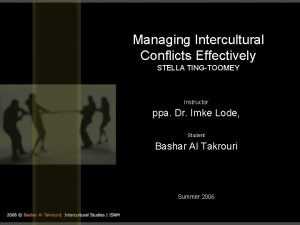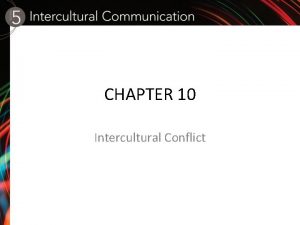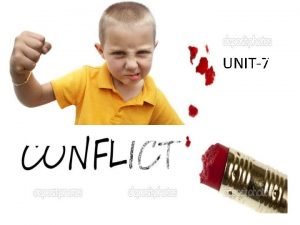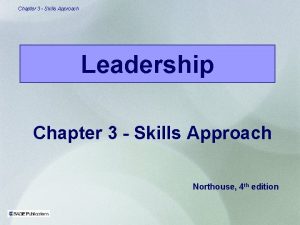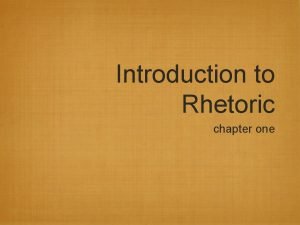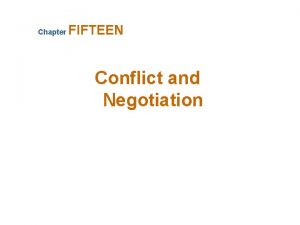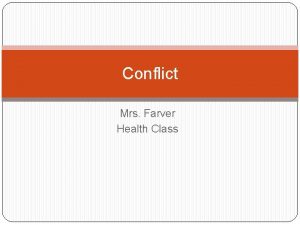CHAPTER 10 Intercultural Conflict Intercultural Conflict Defined as









- Slides: 9

CHAPTER 10 Intercultural Conflict

Intercultural Conflict • “Defined as the experience of emotional frustration or mismatched expectations between individuals from different cultures who perceive an incompatibility between their values, norms, goals, scarce resources, or outcomes during an intercultural exchange. ” Ting-Toomey & Oetzel

Kim’s Model of Intercultural Conflict

Face • Face—a person’s sense of favorable self-worth or self-image experienced during communicative situations. – Emotional extension of self-concept – A universal concept • Face Negotiation Theory—explains how people of different cultures manage conflict.

Facework • Facework—the communicative strategies employed to manage one’s own face or to support or challenge another’s face. – Can be used to initiate, manage, or terminate conflict. • Facework strategies: – Dominating – Avoiding – Integrating

Conflict Communication Styles • • Avoiding Dominating Obliging Compromising Third-party help Emotional expression Neglect Integrating

Intercultural Conflict Style

Individualist vs. Collectivism in Conflict • Individualists are outcome oriented in conflict. – Individualists become frustrated when feelings aren’t asserted honestly. – Conflict is perceived as productive when tangible resolutions are reached. • Collectivists are process oriented in conflict. – Conflict is perceived as threatening when substantive issues are addressed before facework management. – Conflict is perceived as unproductive when face issues and group feelings are not addressed properly.

Context and Conflict • Low-context cultures are more direct and explicit in conflict. – Separate conflict from the individual. – Prefer a solution-oriented stye. • High-context cultures are more indirect and implicit in conflict. – Connect conflict with the individual. – Prefer a non-confrontational style.
 Collection of well defined objects is called
Collection of well defined objects is called Stella ting toomey
Stella ting toomey Intercultural conflict definition
Intercultural conflict definition Kim's model of intercultural conflict
Kim's model of intercultural conflict What is conflict?
What is conflict? Example of verbal intercultural communication
Example of verbal intercultural communication The skills approach is primarily
The skills approach is primarily How is rhetoric defined in this chapter?
How is rhetoric defined in this chapter? Internal and external conflict worksheet
Internal and external conflict worksheet What is conflict and conflict resolution?
What is conflict and conflict resolution?

